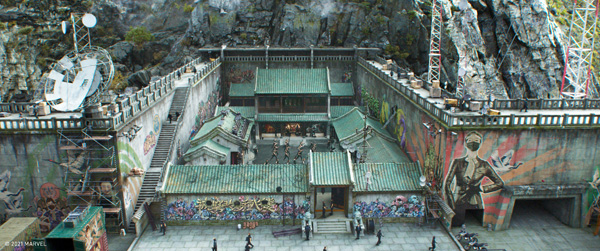
While Marvel’s villains are each villainous in his or her own way, Wenwu from ‘Shang-Chi and the Legend of the Ten Rings’ stands out - an ancient character who operates from a remote fortress that has existed for centuries and continuously evolves as his fortunes change over time. VFX studio Digital Domain was responsible for the fortress’ dynamic structure as it changes between sequences and becomes one of the film's most important locations, allowing Marvel to use to it as a storytelling device to communicate Wenwu’s strength and emotional state.
In a sequence that introduces the audience to the fortress compound, the camera follows a helicopter over a remote, largely inaccessible wilderness. Instead of devoting a large portion of the movie's schedule and budget to shoot at a location, Digital Domain was approached early in the production to create the entire opening scene digitally, from the ground to the sky as well as the fortress itself.
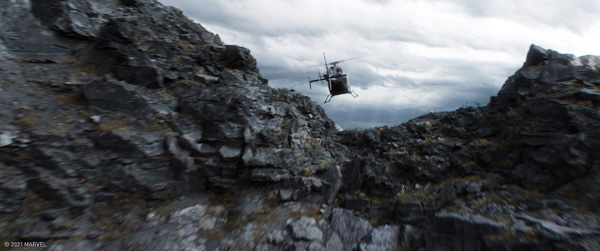
Over 16 months, Digital Domain created nearly 250 shots for the film, accomplished with a team of 114 artists, dispersed between Vancouver, Hyderabad, Los Angeles and Montreal.
Building a Fortress
Working with the Marvel Studios’ art department, Digital Domain began building the landscape using survey data of an uninhabited area of New Zealand that the location scouts had chosen – Arete Peak in the Tararua Forest north of Wellington. Digital Domain’s CG Supervisor on the project Ryan Duhaime said, “This survey data and a set of reference stills formed our point of reference to start with.

“Although we couldn’t go there ourselves for data capture or supervision, we had the basic geometry of the setting and then made it unique for Wen Wu's compound by exaggerating the height of the surrounding mountains and amplifying the peaks. The production was after a look of seclusion, and had created art boards for each era that we had to recreate to match the story. Our task was to give it scale and mood and fill out the countryside.”
Working with the filmmakers, the artists created several iterations of the CG landscape working in Maya and Houdini, and experimented with the precise look of the rocks and vegetation, eventually creating a complete forest. To all of this they added environmental effects like mist and overcast skies, which gave them a chance to add an impression of movement across the landscape with the rolling cloud.
The artists then built and added a digital helicopter, the focal point of this scene, based on a scans and images of the real helicopter brought on set for the character and cockpit shots.
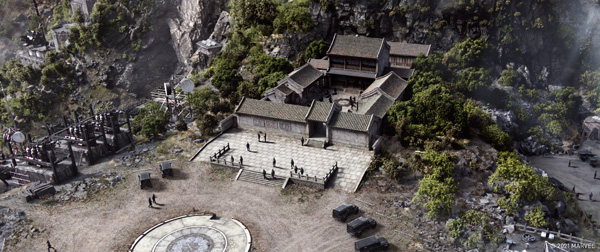
Geometry and Detail
For Digital Domain, the sequence was about creating and controlling tremendous levels of detail that, in turn, controlled the look. The scatter of rocks and trees was created in layers built across nine or ten sections. Layering also helped manage the flyby shots by supporting the scaling of rocks and trees, and the variation in amount of vegetation, which was sparser in the scenes taking place in the 1990s.
Building the terrain took about six months, including the geometry of the ridge. The dimensions alone are impressive. “The terrain we built was roughly a 3km by 3km grid around the Arete Peak. The set compound measured around 60m from front to back, 28m wide and almost 12m tall for the main residence. The immediate Fortress wall structure would be around 140-150m long, 180m wide at its widest point and 20-25m tall,” Ryan said.
“Digitally, the overall compound dimensions grew over time from about 350m by 250m in the earlier scenes, encompassing all the barracks and radio towers, to the modern day compound that measures 550m from the front gates back to the lookout towers, 800m wide from the barracks to the guard towers, and 160-180m from the top of the mountain down to the lower car park.”
Data Management
Rendering for Maya was done in Redshift on the GPU for the sequence, and Houdini in Mantra. “Redshift proxies were used to help them efficiently handle the massive number of details at render time and still iterate at speed to refine the look. They contain all the ingredients for the scatter, which can be turned on and off as required instead of creating individual instances,” Ryan said.
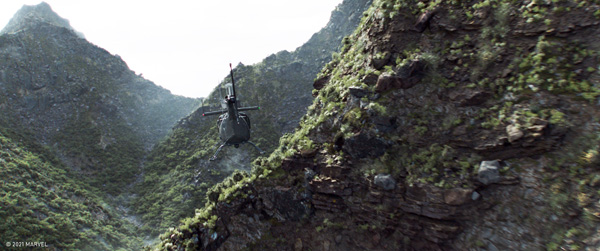
The artists could place exported Redshift proxy files into scenes without actually loading the geometry until it was needed at render time. These files can externally reference image files, volume grids and other types and only use resources when they are needed. Extracting large amounts of geometry from Maya can be slow and using proxies means it only has to be done once, on export. They are stored in an optimised format on disk so that the renderer can use the data immediately after loading without further processing or memory.
To build the structure of the actual fortress, Digital Domain combined the live action with CG assets after an all-digital establishing shot from the air. Artists initially received LiDAR scans of the compound’s courtyard, which included blue screens above the set. With the live action focused on the courtyard, artists then added the rest of the compound, creating a look that shows continuous expansion and additions over the course of centuries. For the scene set in 1996, for example, the artists also added technological elements and equipment appropriate to that era calling for different ‘90s period helicopter, created the same way.

When the action jumps to the present day, the story goes back to the compound, which has changed significantly to reflect the character Wenwu’s harsh experiences in the meantime, and his bitterness and anger. Using the original model, Digital Domain’s artists updated the look, giving it an ominous, militaristic feel.
The compound has become more fortress than home, with new defenses and weaponry added digitally to replace the earlier components from the ‘90s. When the film returns to the compound once again for the final shot, the artists updated the location to show the further shift in circumstances and modernise it for a new era, complete with modern artwork, telecommunications towers and the removal of many of the more aggressive features.
Great Escape
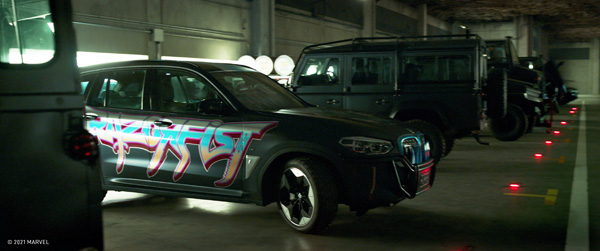
Digital Domain’s work included the action sequence depicting Shang-Chi’s escape from the fortress with his allies after being forced back to his former home. Shang-Chi leads his friends to a huge staging area filled with dozens of vehicles, and chooses a BMW X3 as their escape vehicle. These shots were shot inside a garage, which had to resemble the looks of the fortress with a cave-like ceiling, concrete interior with ramp.
The sequence was handled with a mixture of practical and digital effects, including with the BMW itself. In order to capture the performances of the characters inside, the roof of the SUV had to be removed to accommodate the film crew, then later be replaced by Digital Domain’s artists.
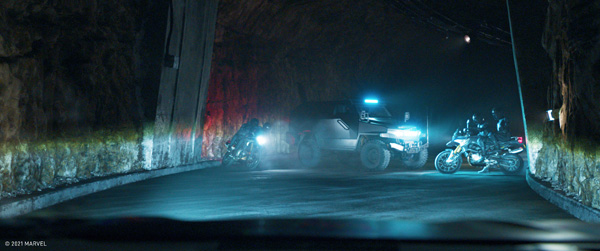
For the more dangerous exterior shots, the BMW itself was also recreated digitally as well as two motorcycles and an armoured personnel carrier based on LiDAR scans sent back to the artists from the set, and CAD files from the manufacturers. For the camera views in these scenes, Digital Domain also needed to add further sections to the structure including windows into server rooms and a power source in the distance.
Turning Dangerous
During the violent chase, two motorcycles and their riders, played by stunt performers, meet a grizzly fate so that, at a certain point when the action turned dangerous, all these elements had to be replaced digitally. Ryan said, “The CG motorbikes could be replicated very precisely. But to keep the digital work on the CG riders simpler and make the action believable and fluid, we focussed on choosing the edits carefully and avoided in-shot takeovers between the real and digital actors.

“The chase comes to an end when the BMW makes a narrow escape, and the armoured carrier crashes into a concrete gate. For this, the production used a real vehicle and recorded it during a high-speed crash. Then our team could create the smash piece by piece using this shot material, replacing the vehicle as well as the wall to make it look exactly as they wanted it to look for the story.”
Digital Domain also helped replace the ten rings in several scenes to give them a more free-flowing look. “We worked with Method Studios, back and forth, using that team’s assets, adjusting Shang-Chi’s sleeves to make sure the rings showed in the shots,” said Ryan. “The practical rings captured in-camera were often looking clunky so our artists totally replaced and re-tracked them into shots to move better with the actor. www.digitaldomain.com



















